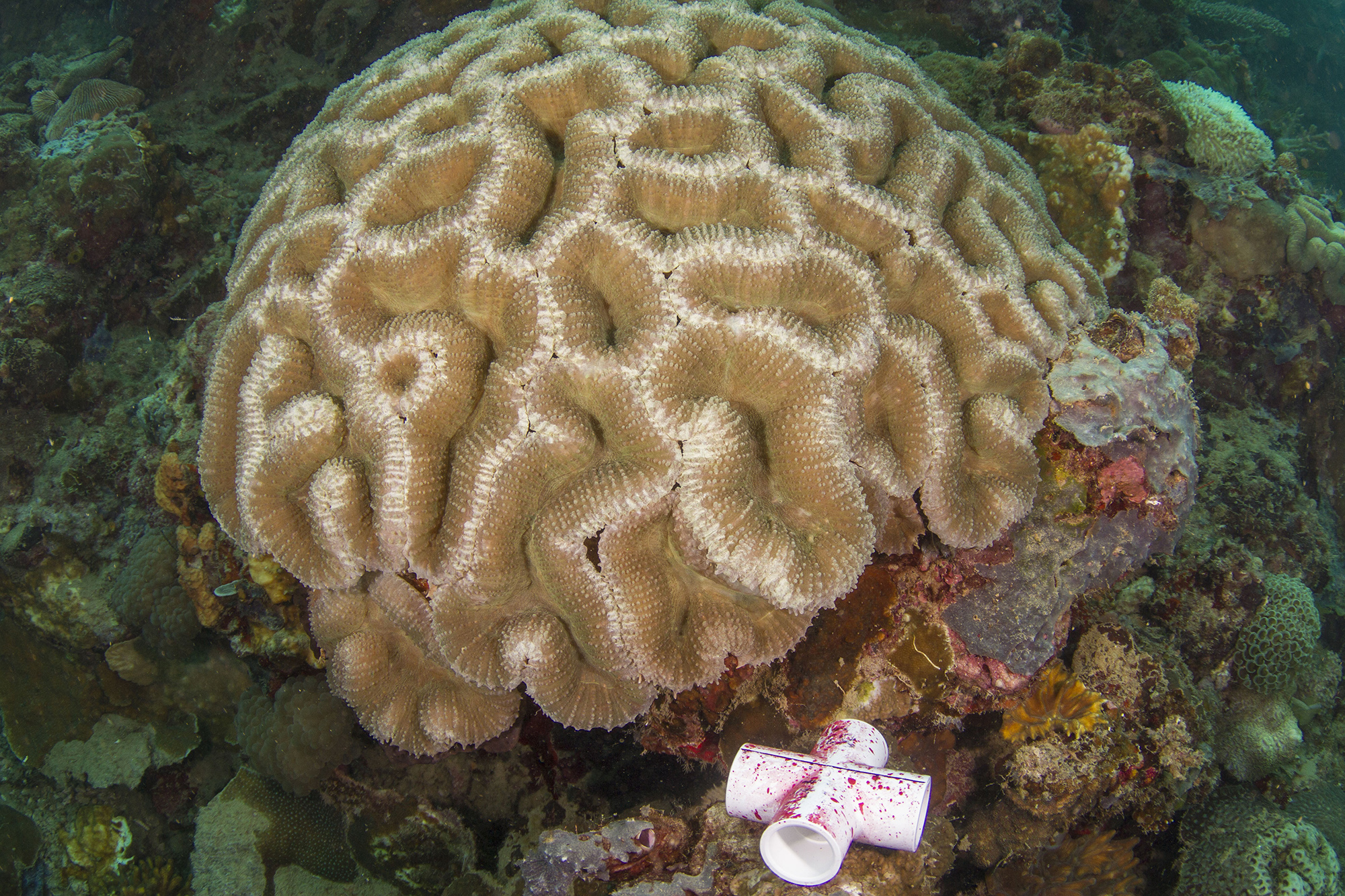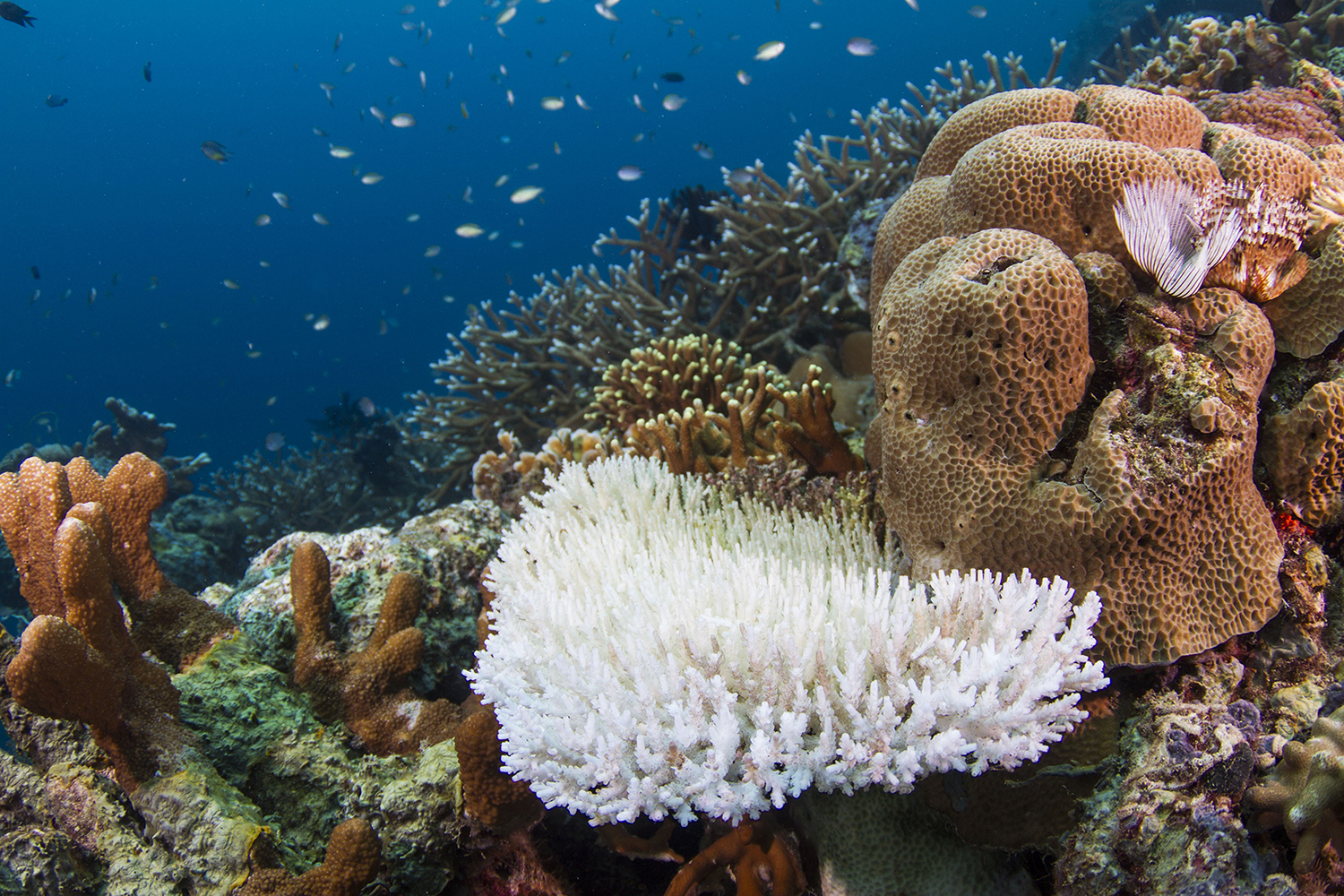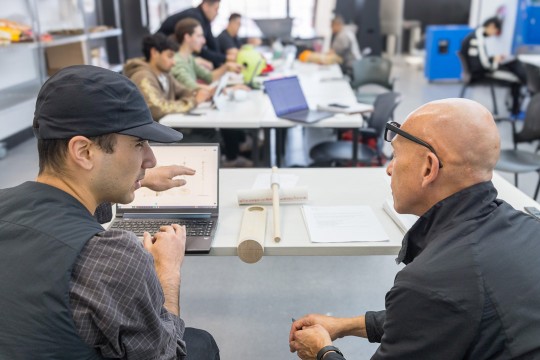Photo alumna dives into coral wonderland in the Philippines as Fulbright fellow
Alexis Principe
Yasmeen Smalley-Norman truly considers it the experience of a lifetime.
Selected to take part in the prestigious Fulbright U.S. Student Program, the 2013 School of Photographic Arts and Sciences alumna was awarded a grant to conduct her dream research, in her dream location.
From August 2016 until May of this year, Smalley-Norman, an enthusiastic marine conservation specialist, was stationed in the Philippines, collaborating with De La Salle University scientists on their multi-year assessment of coral reefs in the country. For her part as a Fulbright fellow, Smalley-Norman took underwater photos of endangered and vulnerable coral species in the island nation. Her images were used to create 3D coral models for an online database that allows for easier identification of coral species.
“It was the culmination of all of my hopes for my professional experience,” said Smalley-Norman, who graduated from RIT with bachelor’s degrees in photojournalism and biomedical photographic communications, in addition to a double minor in environmental science and journalism.

What made her research so enriching and rewarding?
For one, the Philippines’ location in the western Pacific Ocean makes it a paradise for underwater photographers. It’s in the thick of the Coral Triangle, an area that encompasses the waters of six countries and is home to one of the most varied marine habitats in the world. Approximately 600 coral species inhabit the vast space — an astounding number considering that, Smalley-Norman said, the Caribbean has about 50 species.
Diving in coral-rich waters, combined with working with her advisor, premier coral scientist Wilfredo “Al” Licuanan, and other brilliant marine science minds made for an unforgettable, highly educational 9 1/2 months for Smalley-Norman.
It was well worth the wait.
Smalley-Norman applied for this Fulbright research grant three times since graduating from RIT.
Undeterred by two unsuccessful tries, Smalley-Norman kept working with the RIT Global office to refine her proposal and push through the intensive application process a third time. Like the cliché expression, that was the charm.
“My proposal had really been growing and changing,” the Houston, Texas, native said. “As my skills grew and as I got all of this experience and learned how to do 3D modeling, I incorporated that into my final proposal.”
Another aspect of what made this a once-in-a-lifetime experience lies in a disheartening fact: coral reef populations are diminishing at an alarming rate.
Waning coral health is largely attributed to bleaching events, which stress corals’ symbiotic algae and leaves them without a source of nutrition, resulting in eventual death. Rising water temperatures are the main culprit of coral bleaching.
“It was made more important because in the future, the Philippines may not be the dream location for coral reefs because coral reefs around the world are dying,” Smalley-Norman said. “So this dream research may not happen for other people in the future.”
With corals being under siege, Smalley-Norman feels fortunate to have been able to witness their beauty in one of their most celebrated homes.
“I wanted to take a closer look at one of the places where they’re really exquisite,” she said. “But I wasn’t able to find all of the endangered species or all of the vulnerable species. So some species are already disappearing, essentially. It was pretty depressing at some points.”

Smalley-Norman’s findings in the Philippines will live on in a few ways.
She shared her 3D-modeling technique with other researchers, scuba divers and photographers and documented all of her research and the splendor she got so close with here.
Additionally, Smalley-Norman and Licuanan teamed up to co-author the upcoming book, Corals of the Philippines, A Field Guide Focusing on Threatened Species. Smalley-Norman based her contributions — which include links to her 3D coral models — on her Fulbright research.
Smalley-Norman said she is hoping for a mid-July publication date.
Readying for the Philippines
Smalley-Norman extended herself about as much as she could have to prepare for the Fulbright opportunity. Her Swiss Army knife-like skill set is as diverse as the retail options in the Mall of America.
She’s put her grand double-major, double-minor conquer to good use and now owns comprehensive field experience.
“Very varied,” Smalley-Norman said, describing her professional life. “I did a lot of stuff after graduation.”
Between the summer of 2013 and last summer, when she left for the Philippines, Smalley-Norman traveled all over, attacking myriad tasks. She completed internships, a study-abroad program (in the Turks and Caicos Islands) and a contracting job and held a full-time gig.
Smalley-Norman’s high-profile internships have been at the Georgia Aquarium, New England Aquarium’s conservation department and National Park Service while she her contracting job was with Woods Hole Oceanographic Institution.
Then, starting in 2015, she wore many hats as one of two staffers for The Hydrous, a nonprofit startup focused on ocean conservation by utilizing innovative technology like 3D underwater modeling.
Smalley-Norman, The Hydrous’ vice president until July 2016, grew the company’s social-media presence and started its blog. She also executed the grant writing for the entirely grant-funded company, did 3D modeling, presented research at conferences and taught underwater photography and workshops.
She’s dipped her toes in marketing, social media, writing, multimedia, research and other areas.
But Smalley-Norman has fully submerged herself in underwater photography and 3D modeling. At one point at RIT, she got roped in by marine science, and hasn’t let go of it.
Smalley-Norman is particularly fond of the internship she had with the National Park Service. She was an underwater photographer and videographer, diving in charming settings across the U.S. like Yellowstone Lake (Wyoming), Biscayne National Park (Florida) and Crater Lake (Oregon).
“I wanted to learn more about the marine science aspect, I wanted to learn more from professionals,” Smalley-Norman said of her desire to pursue shorter-term, but worthwhile positions.
Smalley-Norman first developed an interest in taking images below sea level the summer prior to her junior year at RIT, when she took an underwater photo course taught by adjunct professor Rene Piccarreto.
The course, Smalley-Norman said, took students on a scuba diving excursion in a quarry in nearby Avon, N.Y. The simple views were mostly of bass and sunfish, but Smalley-Norman was intrigued.
The following winter session, she enrolled in Piccarreto’s advanced class — for which she was able to dive and take photographs in the Caribbean Sea, off Bonaire.
At that point, Smalley-Norman was hooked. Shortly after returning, “I started thinking seriously about taking this not just a hobby, but making it into a professional career,” she said.
The next chapter
Today, a little over a month after her return from the Philippines, the Dover, New Hampshire-based Smalley-Norman is set on sustaining an underwater office. While in the Philippines, she applied for and received a $2,500 training grant from the Women Divers Hall of Fame to become a scuba instructor.
In a career that’s been kept fresh with constant introduction of new tests, it’s no surprise that Smalley-Norman is branching out again.
Soon, she’ll be a scuba instructor. After that, who knows? The unpredictability can be frightening, but it’s also the fun part.
“It’s kind of a gift and a curse,” she said. “Right now I’m actually in between jobs. So it’s the in-between times that are always challenging. But looking at it long-term, I absolutely love that I’ve been doing all of these different things.
“I know that my career will always be based in some kind of marine science communication, but in terms of where that takes me, I have no idea. That’s very exciting.”







